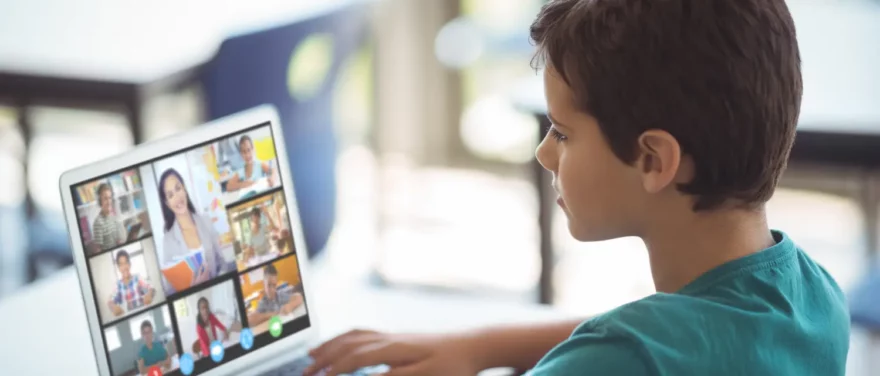
In today’s digital world, keeping your child’s personal details private on social media can feel like an uphill battle. Did you know that simple privacy settings could be the key to protecting their online identity? Our guide provides straightforward steps for parents to shield their young ones from the risks lurking behind screens.
Dive in and take control of your child’s digital footprint.
Key Takeaways
- To protect children on social media, parents need to set strict privacy settings, regularly monitor activity and followers, and use the platform’s parental controls where available.
- Open communication with children about the potential dangers online is essential. Parents should educate themselves and their children about digital citizenship and the importance of thinking critically before sharing personal information.
- Be aware of each social media platform’s unique features and risks. For example, Snapchat messages may seem temporary but can be saved through screenshots; TikTok requires vigilance due to its popularity amongst young users.
- It’s important for parents to know the legal age restrictions for signing up to social media platforms and understand regulations like COPPA that help protect children’s online privacy under 13 years old.
- Encouraging a balance between screen time and other activities is vital for a child’s physical and mental health while protecting them from excessive exposure to potential cyberbullying or inappropriate content.
Understanding the Dangers of Social Media for Children
Children are vulnerable to cyberbullying, exposure to inappropriate content, and privacy risks on social media. It is important for parents to understand these dangers in order to protect their children online.
Potential for Cyberbullying
Cyberbullying is a significant concern in the online world, particularly on social media, where anonymity can embolden bullies. Bullies often use platforms to post hurtful comments or share private information without consent.
It’s crucial for parents to recognise the signs of cyberbullying and take immediate action if they suspect their child is a victim. Regularly talking about internet safety and being aware of your children’s digital interactions helps them feel supported.
To prevent incidents, teach your kids to secure their accounts and think twice before sharing personal details online. Encourage them not only to protect personal data but also to respect others’ privacy.
By promoting kindness in their online behaviour, you prepare them for safely navigating the complexities of social connections online. Now, let’s consider another critical area: exposure to inappropriate content.
Exposure to Inappropriate Content
Children’s exposure to inappropriate content on social media can have lasting negative effects. Parents need to be proactive in monitoring and limiting the type of content their children are being exposed to online.
Establishing strict privacy settings, using parental controls, and regularly checking your child’s online activity can help prevent them from encountering harmful material. Being aware of legal age restrictions, such as those outlined by the Children’s Online Privacy Protection Act (COPPA), is also crucial in protecting your child from unsuitable content.
Open communication with your child about the importance of avoiding inappropriate material online is essential for their safety. Encouraging them to think critically about what they encounter and educating them on responsible digital citizenship can empower them to make better choices when navigating social media platforms.
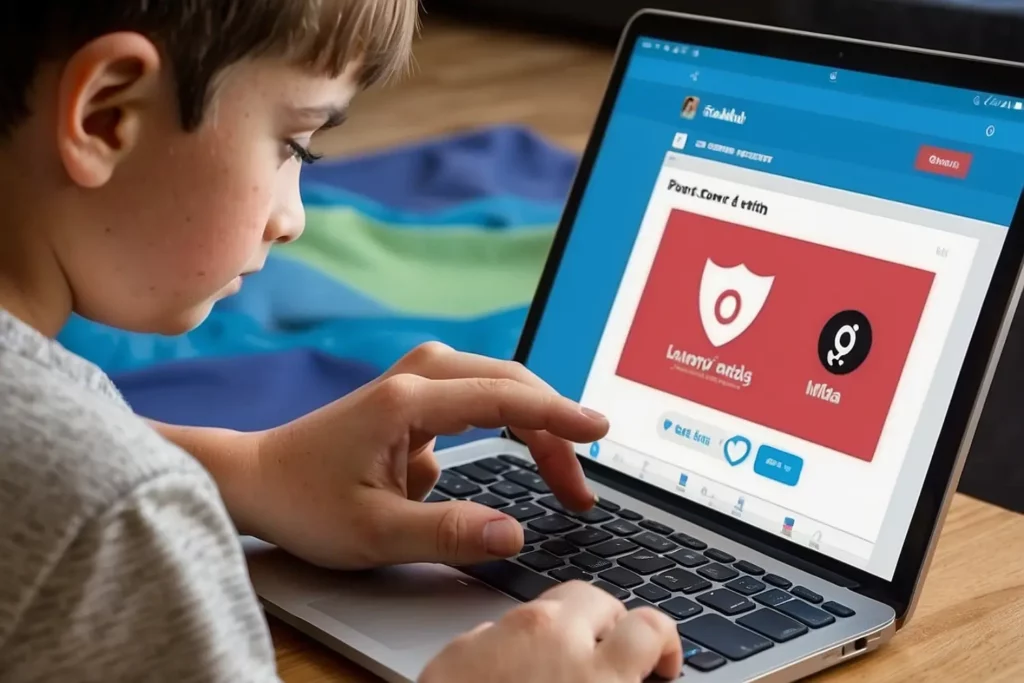
Privacy Risks
Protecting children’s privacy on social media requires understanding the potential privacy risks they may face. Social platforms can expose children to cyberbullying, inappropriate content, and the risk of their personal information being shared without consent.
It is crucial for parents to be aware of these dangers and take proactive steps to safeguard their children’s online privacy and security.
Parents need to educate themselves about the privacy policies of social media platforms and regularly monitor their children’s online activity. Furthermore, discussing the importance of online privacy with children can help them understand the potential risks they might encounter on social media platforms.
Tips for Protecting Children’s Privacy on Social Media
Educate yourself and your child about the potential dangers of social media, set and enforce strict privacy settings, monitor your child’s online activity, encourage open communication, consider using parental controls, and limit the time spent on social media.
These proactive steps can help ensure your child’s safety and privacy online.
Educate Yourself and Your Child
Understand the privacy policies and parental controls of social media platforms your child uses. Engage in open conversations about online risks and teach them to think critically about what they share.
Take proactive steps to educate yourself and your child, setting strict privacy settings on their devices while encouraging responsible online citizenship.
Encouraging critical thinking about personal information shared online is essential to develop a sense of digital responsibility in children. Be proactive in learning the privacy policies of social media platforms used by children, as well as educating them on the potential dangers inherent in sharing too much personal data.
Set and Enforce Strict Privacy Settings
After educating yourself and your child about the potential risks of social media, the next step is to set and enforce strict privacy settings on all social media platforms used by your children. This proactive approach helps in safeguarding their personal information from being accessed by unauthorised individuals. Here are some important measures to consider:
- Carefully review the privacy settings on each social media platform to ensure that only approved connections can view your child’s profile and posts. Regularly update these settings to maintain a high level of privacy.
- Enable two-factor authentication where available, adding an extra layer of security to prevent unauthorised access to your child’s account.
- Instruct your child not to accept friends or follow requests from strangers, emphasising the importance of only connecting with known individuals.
- Regularly remind your child about the dangers of sharing personal information such as their address, phone number, or school details on social media profiles.
- Discuss the significance of using strong, unique passwords for each social media account and regularly changing them to avoid potential hacking attempts.
- Monitor the apps installed on your child’s devices and ensure that they have strong privacy policies in place before allowing their use.
Monitor Your Child’s Online Activity

Ensure that you have ongoing visibility into your child’s online interactions to safeguard their privacy and security.
- Regularly check their browsing history, the apps they are using, and the content they are accessing on social media platforms.
- Engage in open discussions about what they are doing online and who they are communicating with.
- Keep an eye on their friends list, followers, and the kind of interactions they are having with others.
- Look out for any signs of cyberbullying or inappropriate content being shared or received.
- Utilise parental controls to monitor and limit their screen time and access to certain websites or apps.
- Encourage them to report any suspicious or uncomfortable situations they encounter while online.
- Stay informed about the latest trends in social media usage among children and teenagers to better understand potential risks.
Encourage Open Communication
After monitoring your child’s online activity, the next crucial step is to encourage open communication. Discussing the dangers of sharing personal information and interacting with strangers on social media can help children understand the importance of privacy and safety.
Regularly check in with your child about their online experiences, listen to their concerns, and provide guidance on how to navigate the digital world responsibly.
Engaging in open conversations about online safety can empower children to make informed decisions when using social media platforms. Encourage them to speak up if they encounter any alarming or uncomfortable situations while using social media.
Consider Using Parental Controls
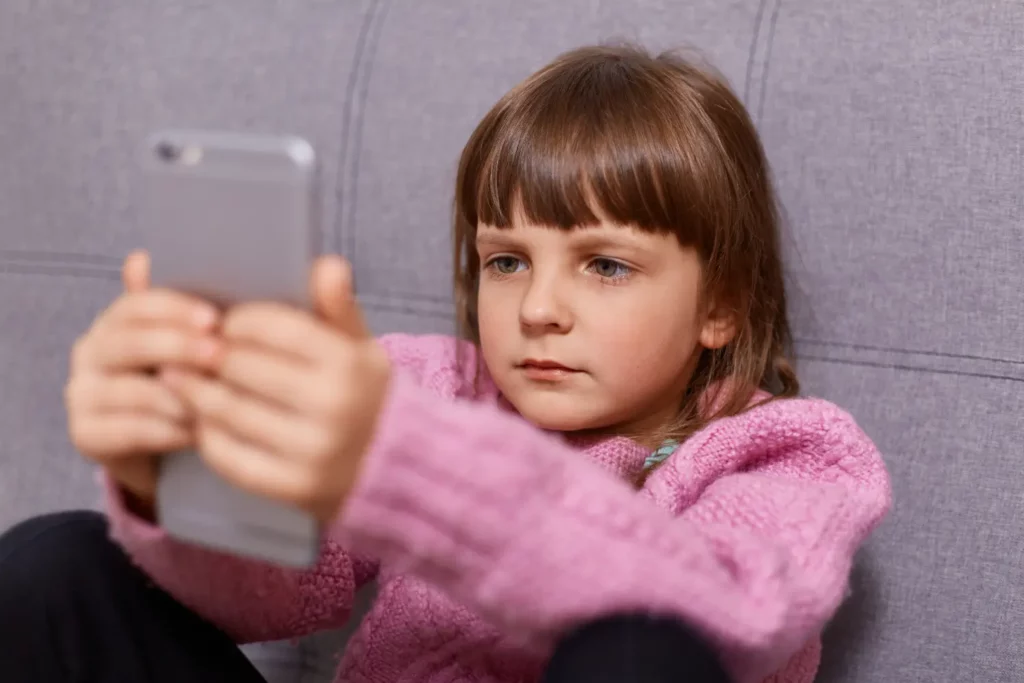
To further enhance your child’s safety on social media, consider using parental controls. These tools allow you to monitor and manage your child’s online activities, limit their screen time, and block inappropriate content.
With the increasing prevalence of social media platforms among children, parental controls provide an additional layer of protection against cyber threats and privacy risks.
Utilising parental controls empowers parents to regulate their children’s access to social networking sites and online games in line with age-appropriate content guidelines. By proactively implementing these measures, parents can help safeguard their children’s privacy while promoting a secure and controlled digital environment.
Limit The Time Spent on Social Media
It’s crucial to set limits on the amount of time your children spend on social media. Research shows that excessive screen time can have negative effects on their physical and mental well-being, including disrupted sleep patterns and increased risk of cyberbullying.
By monitoring their online activity and setting clear boundaries, you can help ensure a healthy balance between their digital and real-life experiences.
Setting restrictions on screen time doesn’t have to be a daunting task. Many devices offer built-in features that allow parents to limit the hours spent on social media apps or websites.
Utilising these tools can help instil healthy habits in your children while also safeguarding their privacy online.
Navigating Specific Social Media Platforms
Learn how to navigate specific social media platforms like Facebook, Twitter, Instagram, TikTok, and Snapchat to protect your child’s privacy online. Read the full article for more tips on safeguarding children’s privacy on social media.
When using Facebook, parents should familiarise themselves with the platform’s privacy settings and controls to ensure their child’s safety. It is important to regularly review and adjust these settings as needed, limiting who can view their child’s profile and monitoring who has access to their personal information.
It’s crucial for parents to educate their children about the potential risks of sharing photos and personal details on Facebook. Encouraging open communication and setting clear guidelines about what is acceptable to share online can help protect children from cyberbullying or predators on the platform.
Additionally, parents can consider using parental control features provided by Facebook, such as restricting certain content or monitoring time spent on the site.
When it comes to safeguarding your child’s privacy on Twitter, it’s crucial to understand the platform’s privacy settings. Familiarise yourself with the various options available, such as controlling who can see your child’s tweets and who can tag them in photos.
Additionally, consider using the “Protect Your Tweets” feature, which allows users to approve follow requests before others can view their tweets. Regularly reviewing these settings is essential for maintaining your child’s online privacy.
Moving on to Instagram – a popular social media platform among children and teenagers – understanding its unique privacy features is vital in protecting your child’s online safety.

Instagram is a widely used social media platform that allows users to share photos and videos with their followers. Parents should be aware of the potential risks associated with Instagram, such as exposure to inappropriate content and the need for strict privacy settings.
It’s important for parents to educate themselves about Instagram’s privacy policies and features, including how to set privacy controls and monitor their child’s online activity. Additionally, having open communication with their children about the dangers of sharing personal information on Instagram can help ensure their safety.
Parents can also consider using parental controls and monitoring tools to limit the sharing of their children’s photos and personal information on Instagram. By being proactive in understanding and enforcing these measures, parents can safeguard their children’s online activity and protect their privacy while using this popular social media platform.
TikTok
Moving on to TikTok, it is essential for parents and guardians to understand that this platform has gained immense popularity among children and teenagers. With its short-form video content and interactive features, TikTok poses both entertainment and privacy risks for young users.
Parents must be aware of the potential for exposure to inappropriate content, cyberbullying, and data privacy concerns on this platform. It’s crucial to stay informed about the platform’s privacy policies and parental controls, as well as to be proactive in monitoring their child’s online activity.
Given the significant influence of TikTok on young users, staying involved in their digital footprint ensures a safer experience. Regularly discussing the importance of online privacy and security with your child can help them develop a responsible attitude towards social media use.
Snapchat
Snapchat is a popular social media platform among young users due to its disappearing messaging feature. However, it’s crucial for parents to be aware that the seemingly temporary nature of content on Snapchat doesn’t guarantee privacy.
The app poses potential risks, as users can still take screenshots of messages and photos without the sender’s knowledge. Additionally, there have been concerns about inappropriate content being shared through the platform.
Therefore, it’s important for parents to educate themselves about Snapchat’s features and enforce strict monitoring and privacy settings for their children.
Additional Measures for Ensuring Children’s Safety on Social Media
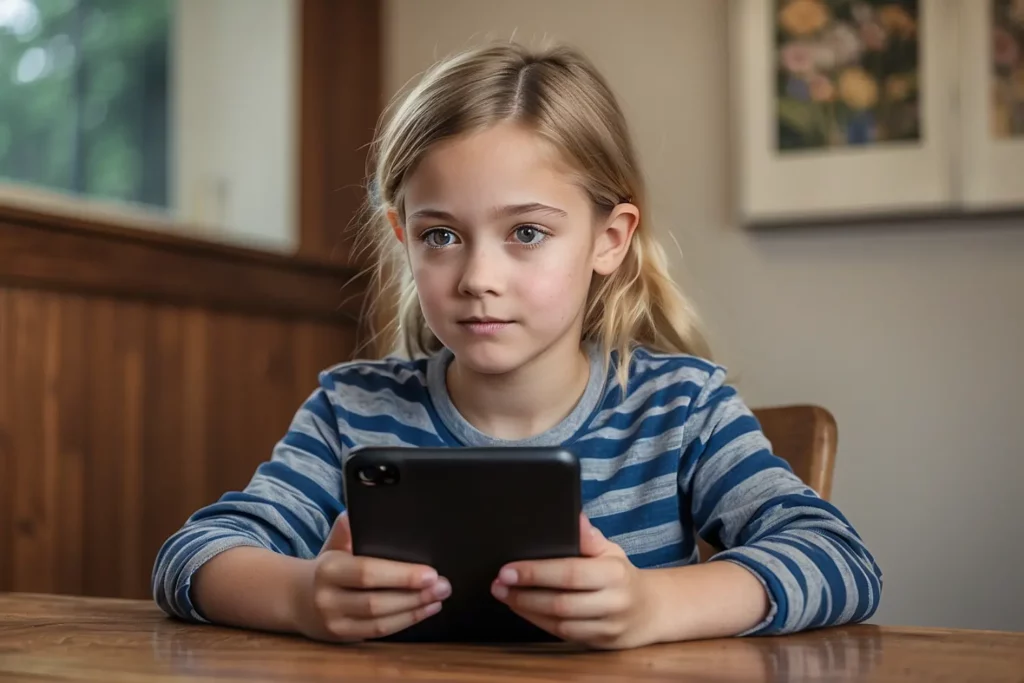
Know the legal age restrictions for social media platforms and be aware of the Children’s Online Privacy Protection Act (COPPA) to safeguard your child’s online privacy. Regularly check your child’s privacy settings and followers and discuss the importance of online privacy and security with them.
Read more about protecting children’s privacy on social media in our complete guide.
Know The Legal Age Restrictions
Ensure your child meets the legal age requirements before signing up for any social media platform. Each platform has set age limits to maintain a safe online environment for its users, and it’s crucial to adhere to these guidelines.
By doing so, you can protect your child from potential dangers associated with using social media at an early age.
Understanding the legal age restrictions is just one aspect of safeguarding your child’s privacy online. Let’s explore other important measures parents should consider when protecting their children on social media platforms – Be Aware of the Children\’s Online Privacy Protection Act (COPPA).
Be aware of the Children’s Online Privacy Protection Act (COPPA)
Children’s Online Privacy Protection Act (COPPA) is a crucial piece of legislation designed to protect the online privacy of children under the age of 13. Websites and online services are required to obtain verifiable parental consent before collecting personal information from young users.
Furthermore, COPPA dictates that parents have the right to review these personal details, request their deletion, and prohibit further collection.
As a parent or guardian, understanding COPPA empowers you to make informed decisions about your child’s online activities. By familiarising yourself with this law, you can ensure that your children’s privacy is being protected when they engage with digital platforms.
Regularly Check Your Child’s Privacy Settings and Followers
Regularly checking your child’s privacy settings and followers is essential to safeguard their online privacy.
- Set a routine to review and update privacy settings on your child’s social media accounts, ensuring that only trusted friends and family have access to their posts and personal information.
- Monitor who is following your child on social media platforms, blocking or reporting any suspicious or unwanted followers to ensure their safety.
- Encourage your child to regularly review their list of followers and remove anyone they do not know in real life, emphasising the importance of only connecting with people they trust.
- Stay informed about the latest updates and changes in privacy settings on popular social media platforms, adapting security measures accordingly to protect your child from potential risks.
- Utilise parental control features provided by the platforms to limit who can interact with your child online, ensuring a safer experience for them while using social media.
Discuss The Importance of Online Privacy and Security with Your Child
It is crucial to have open and honest discussions with your child about the significance of maintaining online privacy and security. By educating them about the potential risks of sharing personal information on social media, you can empower them to make responsible decisions while navigating the digital world.
Encourage them to think critically about what they share online and to communicate openly with you if they encounter any concerning situations. Additionally, it’s important to set boundaries for online activity, monitor their use, and lead by example in practicing safe internet habits.
Parents should actively engage in conversations with their children about the importance of safeguarding their privacy and security while using social media platforms or other online applications.
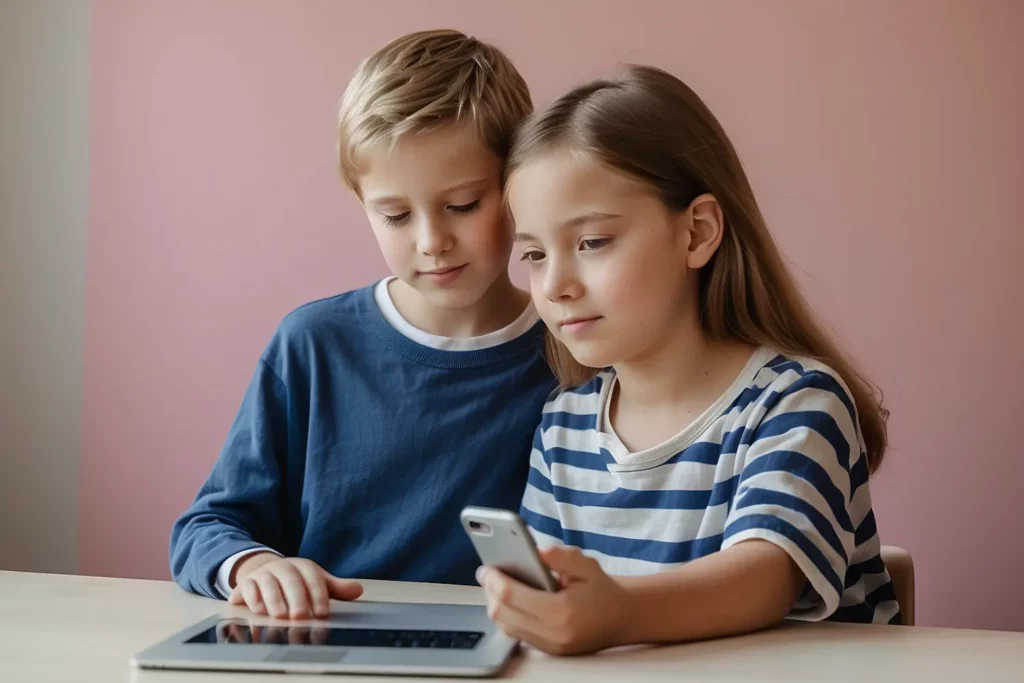
In conclusion, safeguarding children’s privacy on social media is a critical responsibility for parents. Setting and enforcing strict privacy settings, educating children about online risks, and open communication are key actions for protecting their safety.
By actively monitoring online activity, limiting screen time, and using parental controls, parents can help ensure the well-being of their children in the digital world. Taking proactive measures to understand social media platforms and government regulations is also essential to create a safe online environment for kids.
FAQs
What can parents do to protect children’s privacy on social media?
Parents can use parental controls, teach their kids about online safety, and adjust privacy settings on social networks to keep their children’s information safe.
Why is it important to monitor my child’s internet usage?
Monitoring your child’s internet usage helps protect them from risks and ensures they are adhering to age restrictions while using social media responsibly.
How does the Children’s Online Privacy Protection Act (COPPA) help safeguard children?
The Children’s Online Privacy Protection Act requires websites to obtain parental consent before collecting personal information from kids under 13, thus protecting your child’s privacy online.
Are there specific tips for safeguarding teens’ privacy on social media?
Yes, educating teens about the importance of using social networking privacy settings and limiting their social media use are key steps in protecting their online identity.
What should parents know about setting limits on children’s use of social media?
Setting clear rules for when and how long your kids can access social media is part of a good strategy for ensuring online security and maintaining healthy digital habits.
